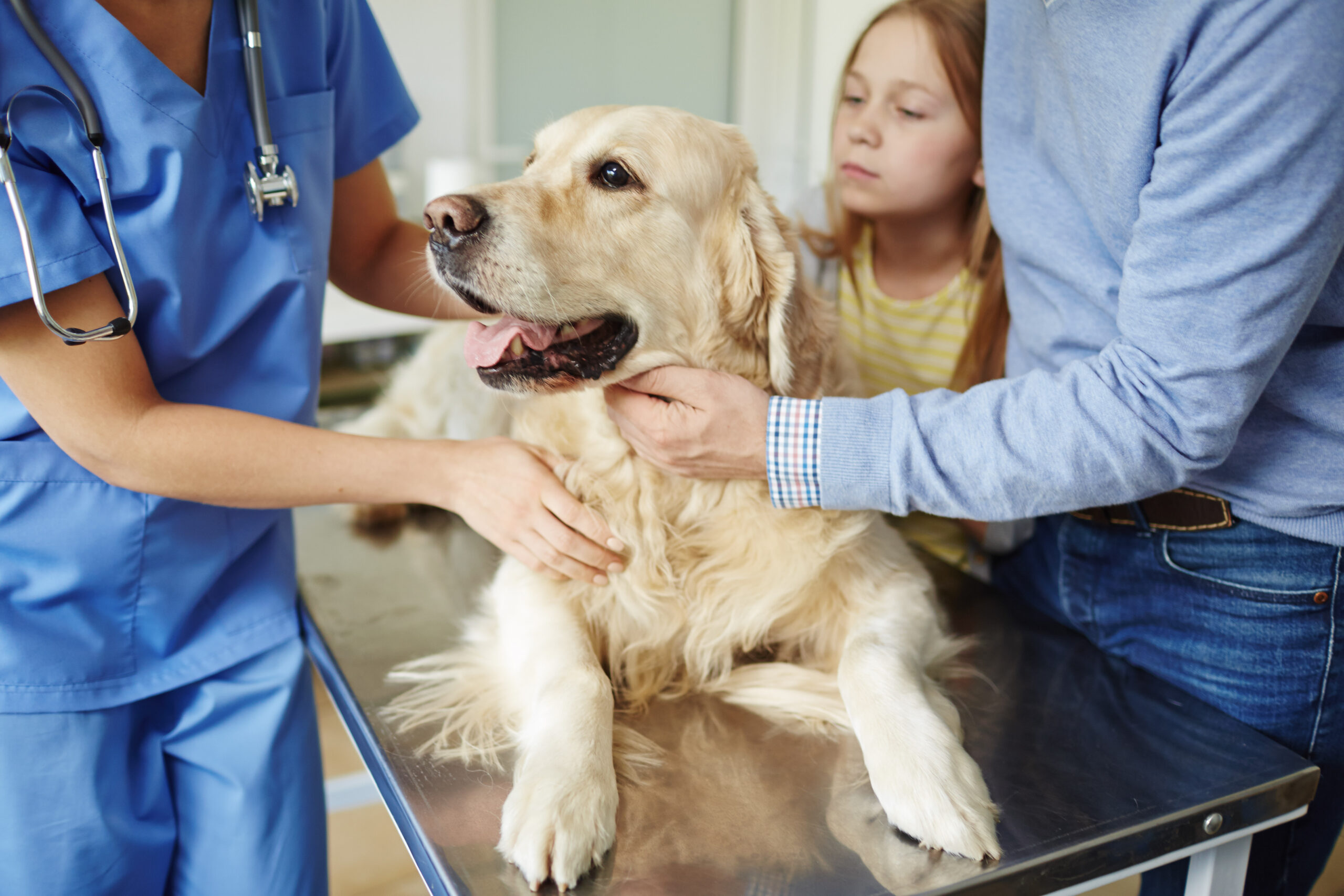Owning a pet is a long-term financial commitment. From food and grooming to preventative medication, people may be familiar with the regular costs of pet ownership but what are some of the unexpected or hidden costs to consider when it comes to our pets?
Research from the Animal Medicines Authority (AMA) in 2022 asked pet owners to consider their top three challenges with ongoing costs (24%) cited as one of the most common difficulties. According to the AMA, Australians spend $33 billion annually to keep pets fed, healthy and well accessorised with food representing over half (51%) of all expenditure followed by vet costs (14%)^.
While the costs of pet ownership are typically higher during the first year due to the purchase cost and things like vaccinations, it’s important to educate pet owners about preparing for ongoing costs throughout a pet’s life – including both the expected and unexpected.
1. Purchase or adoption fees
Many people choose to adopt a companion animal through a shelter and will need to pay a small adoption fee – the cost of the fee depends on the species and age of the pet. According to RSPCA NSW as of July 2022 for example, the adoption fee for a puppy under 12 months is $580 while the fee is $250 for a kitten aged under 6 months.
Buying from a reputable breeder will be more costly, and purchase costs vary widely depending on the breed of the animal. According to moneysmart.gov.au, the purchase cost from a breeder* can range from $500 – $3,000 as a guide.
2. Microchipping, vaccination & de-sexing
Pet owners should ensure their pet is microchipped from an early age, as this could help reunite pets with their owners if they are lost. Microchipping can also be valuable during a natural disaster such as a flood or bushfire event where pets may be displaced and is normally a requirement for registration of pets in most Australian states and territories.
De-sexing an animal before it is sold or given away is compulsory in some states and territories, including for cats in Tasmania (TAS) , cats and dogs in Western Australia (WA), South Australia (SA) and the Australian Capital Territory (ACT)^, while it’s strongly encouraged in other states and territories. It’s worth noting, some Australian jurisdictions offer discounted registration fees if a pet has been de-sexed so, this is one way pet owners could keep costs down.
The estimate cost for microchipping, vaccination & de-sexing could cost up to $1,000 during the first year*, or for pet owners that adopt the fee for these services is generally included in the adoption fee.
3. Council registration fees
Registering your pet with your local council is part of responsible pet ownership. Registering a pet protects the pet, owners and the community and increases the chance of the pet being returned safely to its owner in the event it gets lost. While each state has its own rules on registration, it’s recommended that pets are registered once they are microchipped at around 6 months of age.
Lifetime registration fees vary depending on the local precinct and age of the animal. For instance, according to Penrith City Council, the lifetime registration fee for a de-sexed dog (by 6 months of age) is $75 while the cost for a not de-sexed or desexed dog (after 6 months of age) is $252.
According to moneysmart.gov.au, council registration fees generally range from between $30 – $190*.
4. Unexpected or emergency pet healthcare costs
When you purchase or adopt a pet, you’ll probably consider routine healthcare costs for things like vet check-ups, flea & tick preventatives and annual vaccinations but have you thought about how you would manage unexpected or emergency pet healthcare costs?
Pets experience accidents or illness at any age, with PetSure research showing the lifetime cost of owning a pet is around $30,000***. According to the Pet Health Monitor 2023 report, the most common health condition for dogs aged under 12 months is ear infections which has an average treatment cost of $315 while the most common health ailment for dogs aged over 8 years is osteoarthritis with an $423 average treatment cost and a maximum treatment cost of $12,255, based on 2022 PetSure claims data#.
Pet insurance can help reduce the out-of-pocket expense for eligible vet bills when things don’t go according to plan. Many policies reimburse up to 80% of the eligible vet bill to the value of $10,000 or more each year, which means if you get a vet bill of $1,000 your policy could cover $800. Remember, premium costs typically rise each year as your pet gets older and may be more likely to experience health risks.
Some home and contents insurance policies offer pet care cover, which provides a limited contribution towards pet-care expenses (generally around $500-$2,000 per year). These products generally provide cover for accidental injury to your pet up to a nominated annual or per-condition limit, that’s usually much lower than a stand-alone pet insurance product.
A savings plan may be an alternative option to put aside some money to cover any unexpected pet costs.
5. Boarding and pet sitting
For jet-setting pet owners, it’s important to consider costs for pet boarding or pet sitting.
Costs for boarding kennels and catteries can range from $25 to $50 per day, according to moneysmart.gov.au* or you could find a pet sitter through a pet care marketplace. However, these costs can add up quickly especially for pet owners that travel frequently or have multiple pets.
6. Puppy school and behavioural training
Puppy school and behavioral training may be a good idea when an animal is young, but behavioural training can be suitable at any age. Dog training costs vary depending on the state or territory, provider and length of the training session but according to OneFlare, average costs for dog training can range from $140 – $275. Find out what average costs for training could be in your state.
7. Damage to property
Pets may cause damage to your property, including furniture and gardens. The Insurance Council of Australia reports that damage by pets is generally not covered by home insurance, potentially leading to costly repairs. For instance, if your new puppy chewed through your lounge this could set you back upwards of $2,000, as an estimate, to purchase a new replacement lounge.
8. Pet tech gadgets
With an abundance of pet tech gadgets on the shelves, pet owners may be tempted to invest in pet tech devices like GPS trackers, pet cameras, robo litters or automatic feeders particularly with more Australians returning the office more regularly. While it’s typically the upfront cost pet owners will need to budget for, some tech devices will have ongoing expenses for maintenance, subscription fees or data plans. A PetSure survey of 2,000 respondents** found one in five (21%) of pet owners spend up to $500 each month on pet tech.
9. The pet rental ‘tax’
According to Domain, an analysis of Sydney rental listings from the March 2019 quarter found rental prices for pet-friendly properties were 11% higher compared to non pet-friendly properties~. This additional cost in the ‘pet rent tax’ works out to be an additional $60 per week or $3,120 per year, based on the research.
It’s worth noting too, in some states like Western Australia, landlords request a ‘pet bond’ or deposit of up to $260 from renters except for pet owners with a service dog according to the WA government website. It’s also not uncommon for a landlord to request professional end-of-lease cleaning for the carpet if you’ve resided with a pet which could you set you back a couple of hundred dollars depending on the provider or any damage caused.
From council registration fees to behavioural training to the pet rental ‘tax’, there are many hidden costs of pet ownership that Australians should prepare for in the current economic climate. Whether it’s having a pet-specific budget plan, getting an animal de-sexed and microchipped from an early age or taking out a pet insurance policy, there are many ways you prepare for the full spectrum of costs that come with the joy of owning a pet.
References:
^ Pets in Australia: a national survey of pets and people, Animal Medicines Australia (November 2022)
* “Getting a pet: how much it costs to own a dog or cat” – https://moneysmart.gov.au/family-and-relationships/getting-a-pet, Moneysmart.gov.au
# PetSure claims data for the 2022 calendar year (January – December 2022). Pet Health Monitor 2023 report.
RSPCA NSW, adoption fee – https://www.rspcansw.org.au/what-we-do/adoptions/adoption-fees/
** PetSure surveyed 1,000 dog and cat owners nationwide across Australia from 14 to 17 April 2023. Research supplied by PureProfile.
***Average lifetime healthcare costs estimated using output from PetSure proprietary modelling. This modelling incorporates PetSure claims and policy data from ~c. 2016 to the present day across all insured breeds. This estimate relies on assumptions around future healthcare cost increases and represents a 15-year view of an average animal, for the mix of breeds currently insured with PetSure brand partners.
~ Domain research – https://www.domain.com.au/advice/landlords-who-allow-pets-could-boost-their-rental-return-by-up-to-30-per-cent-833532/ (March 2019)
Pet insurance can help by covering a portion of the eligible vet bill if the unexpected happens. Because it is difficult to predict the costs of veterinary care, it can help to have measures in place to help prepare for the unexpected. Check out our partner network and explore our policy tools to find a pet insurance policy.
Not all conditions or items are covered by Pet Insurance. Refer to the applicable Product Disclosure Statement for information about coverage and exclusions.



 Fact checked
Fact checked



